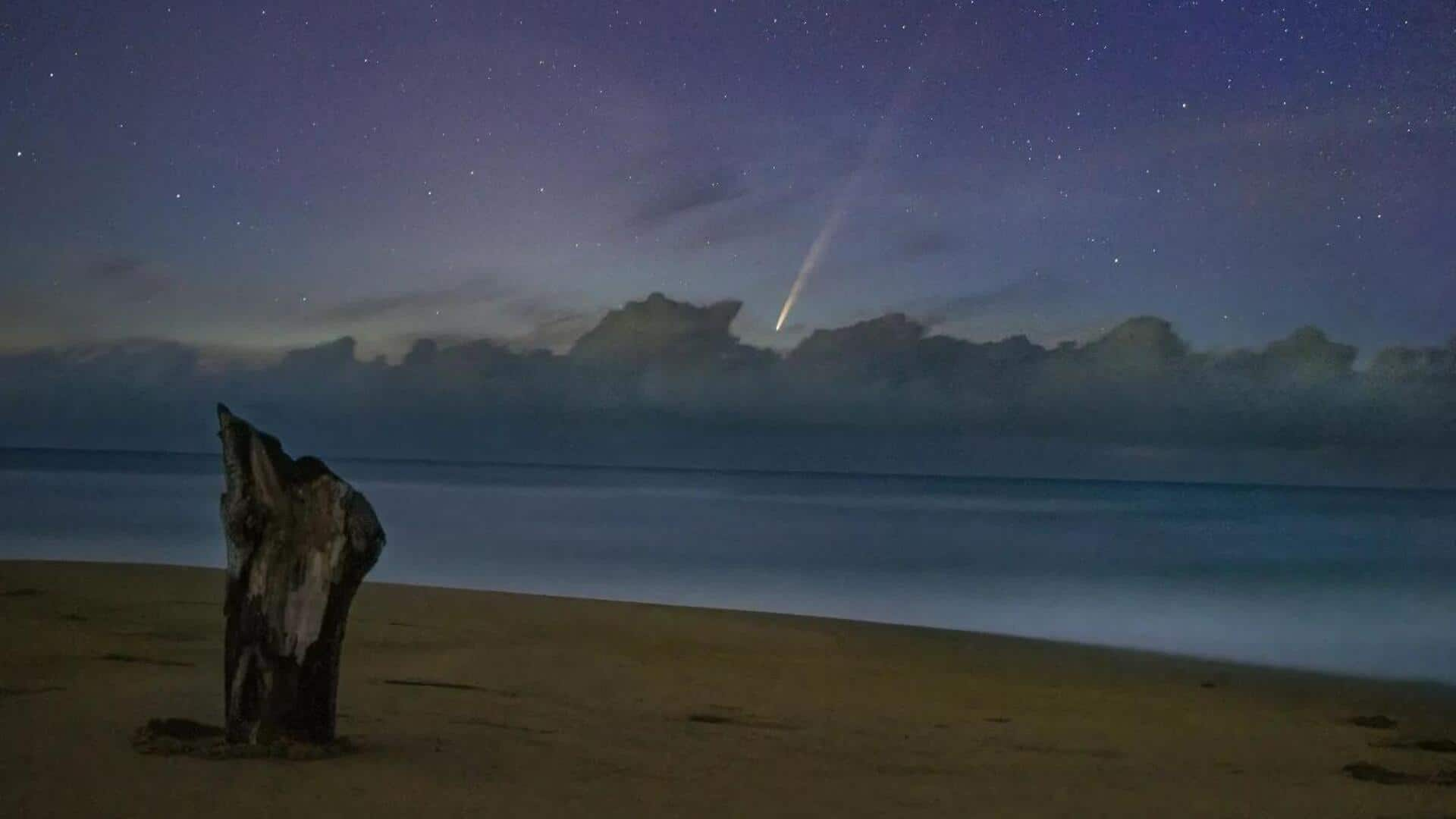
Indian astrophotographers capture comet seen once in 80,000 years
What's the story
Indian astrophotographers have managed to capture the rare Comet C/2023 A3 (Tsuchinshan-ATLAS). This celestial event, which started in early October, was visible from different parts of India. The comet will be closest to Earth between October 12 and 24. According to astronomical experts, if the comet's tail is well-lit by sunlight, it could be visible without any special equipment.
Viewing details
Astrophotographers capture comet from various locations in India
The excitement surrounding Comet C/2023 A3 was palpable, with astrophotographers capturing breathtaking images of the comet's long, faint tail streaking across the night sky. Images from locations like Bengaluru, Mahabalipuram, and Gongma la in Ladakh showcased the comet in all its glory, sparking widespread interest in astronomy across the nation. The comet was first spotted low in the west after sunset, earlier this month. It will remain visible some 45 minutes after sunset every day until the end of October.
Captured moments
One astrophotographer spotted the comet with his nakes eye
The rare comet was photographed by a team of first-time astrophotographers at Gongma la in Hanle, Ladakh on October 1. Despite the challenging conditions, the team managed to capture stunning images of the comet. The image was shared on Instagram by account comic_trails In Tamil Nadu, astrophotographer Satya Narayanan Sridhar captured a breathtaking image near Mahabalipuram on October 4. He described spotting the tail and coma of the comet with his naked eye as an "unbelievable" experience.
More sightings
Comet's journey captured in Bengaluru and Hyderabad
In Bengaluru, Keerthi Kiran M of the Bangalore Astronomical Society (BAS) captured the comet's long tail in a stacked image. She also shared a time-lapse video of the comet between 5:15am and 5:30am. In Hyderabad, an animation professional and amateur wildlife and astrophotographer known as @itsardnepu on Instagram posted a beautiful close-up photo of Comet C/2023 A3 (Tsuchinshan-ATLAS) from the outskirts of the city.
Twitter Post
Take a look at the close-up of Comet C/2023-A3
A closeup with Comet C/2023-A3 Tsuchinshan-ATLAS
— ardnepu (@itsardnepu) October 5, 2024
captured from Outskirts of Hyderabad, Telangana, India.@ApodNasa @isro @NASA @incredibleindia @tstdcofficial #ApodNasa #isro #NASA #incredibleindia #tstdcofficial pic.twitter.com/NipkaBSqUI
Comet's origin
Comet C/2023 A3: A visitor from the Oort Cloud
Discovered last year, Comet C/2023 A3 (Tsuchinshan-ATLAS) is thought to have originated from the Oort Cloud. NASA describes the region as a "big, thick-walled bubble made of icy pieces of space debris the sizes of mountains and sometimes larger," far beyond Pluto. The comet was first spotted by Chinese and South African observatories when it came within 71 million kilometers of Earth.